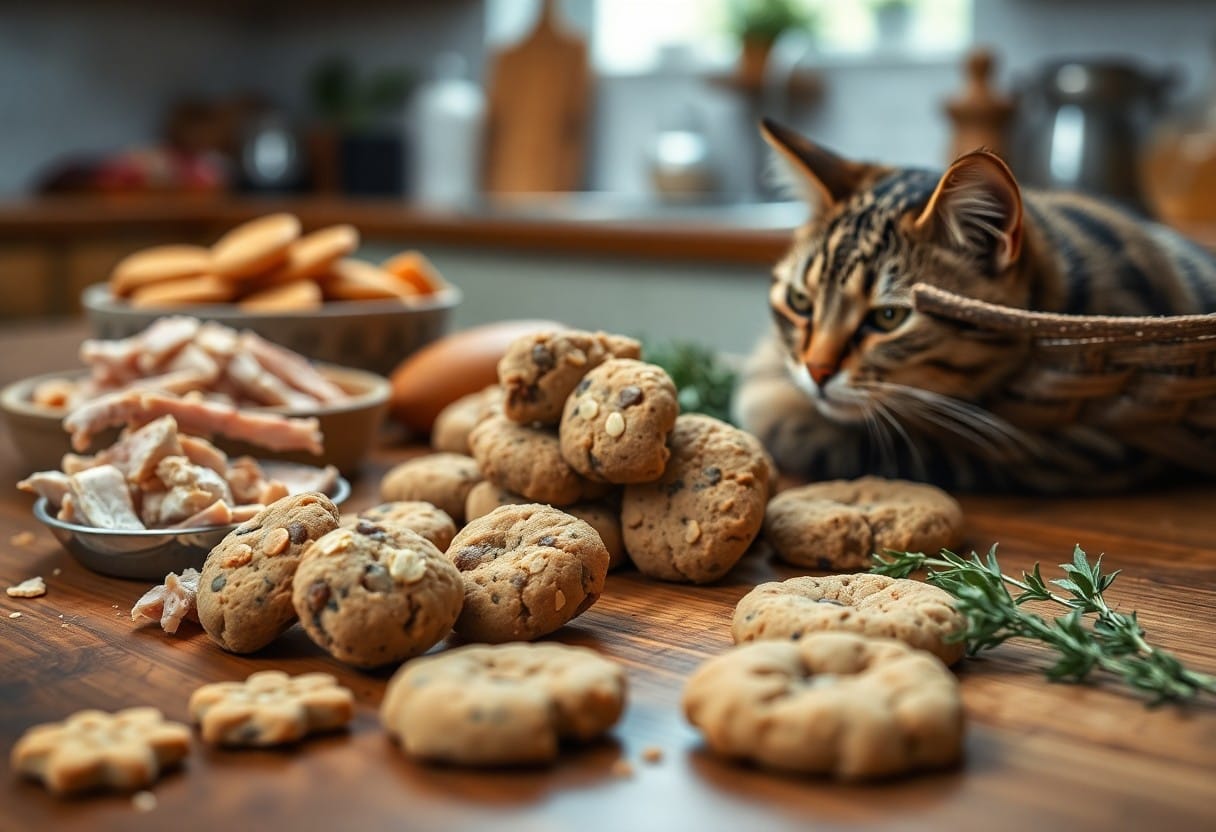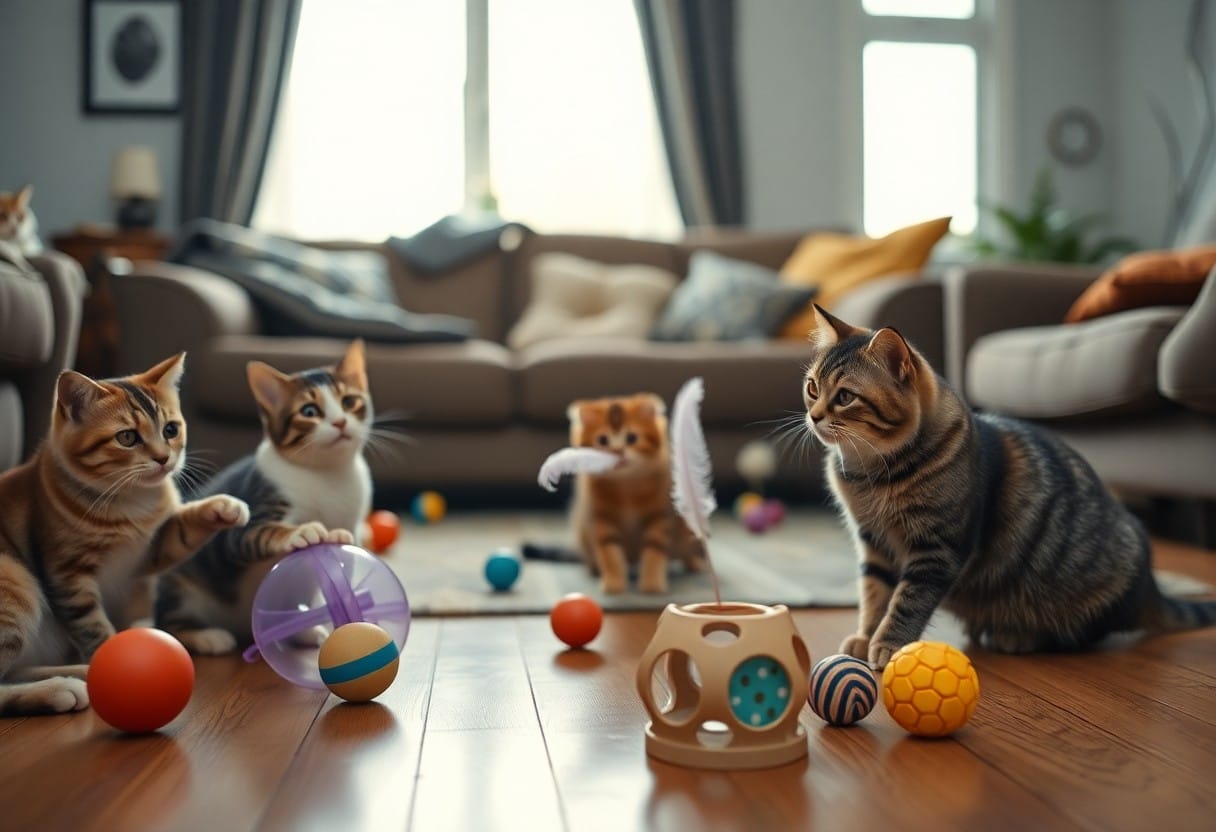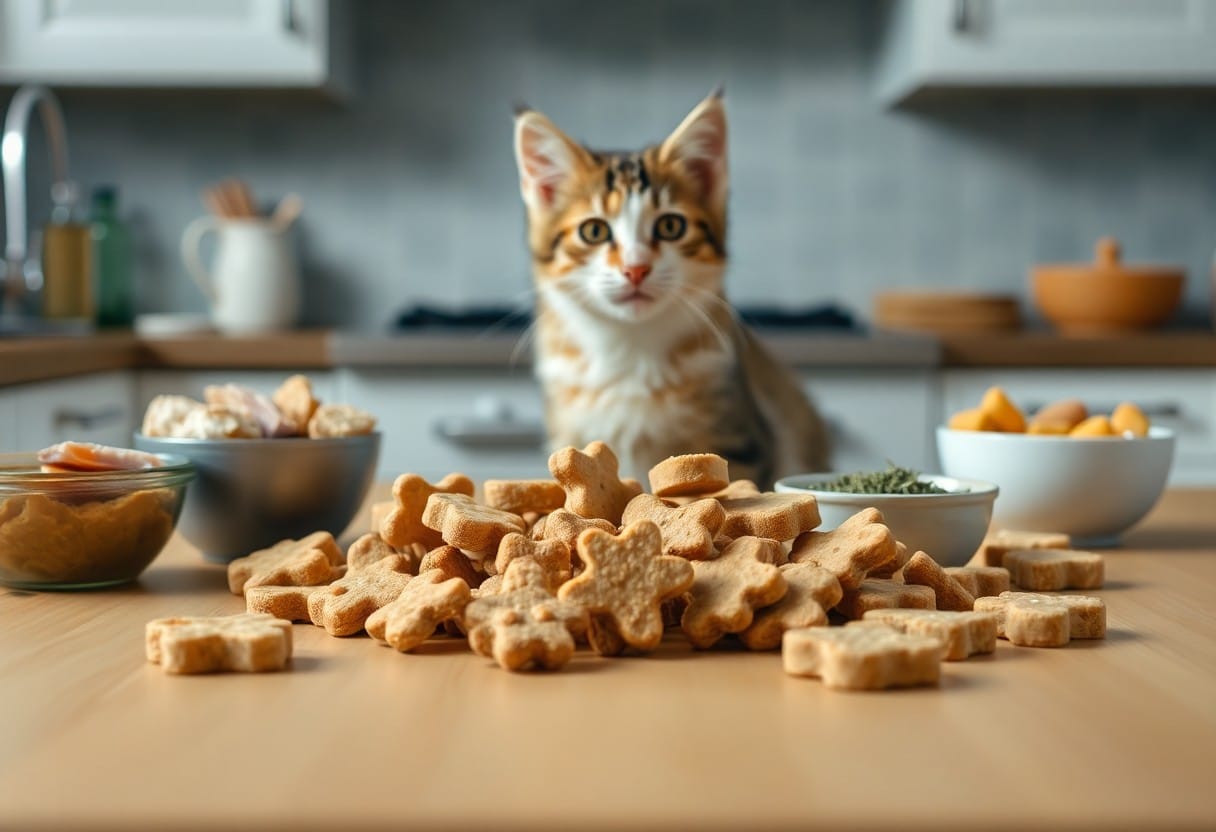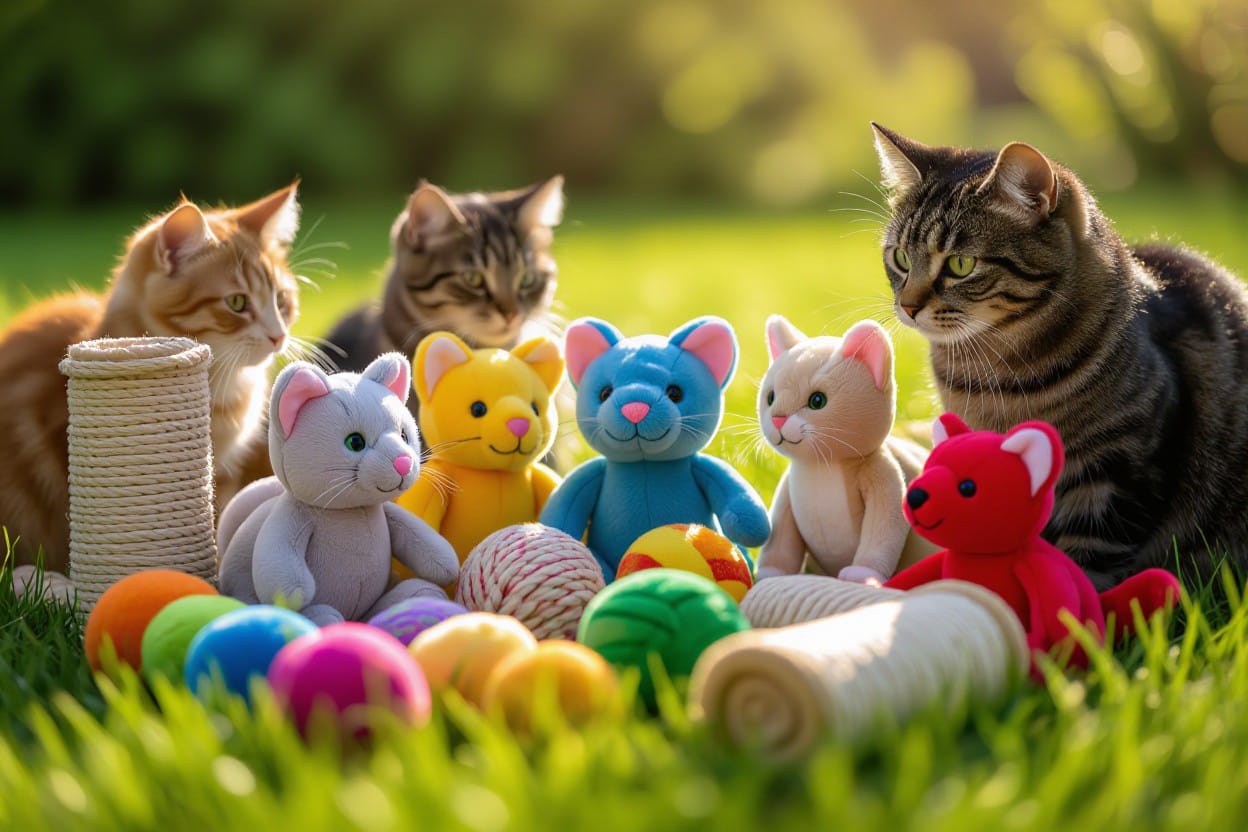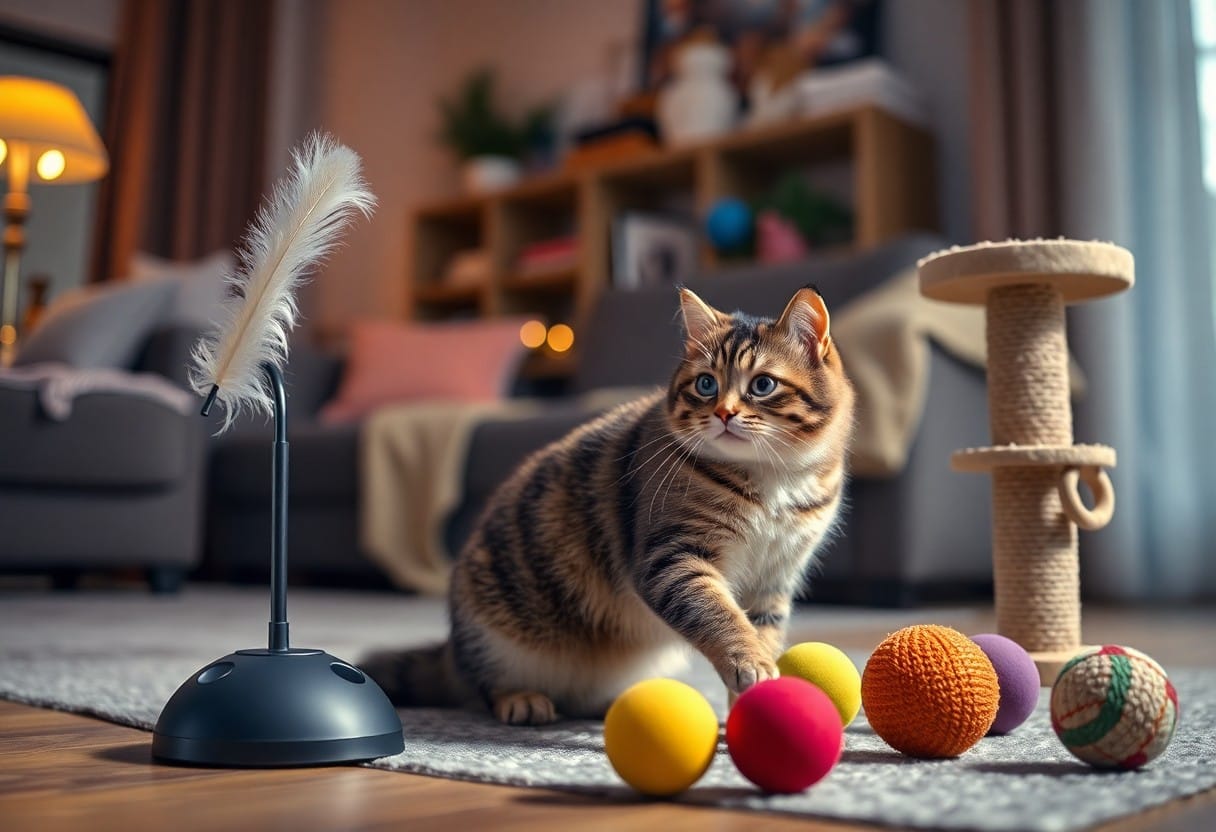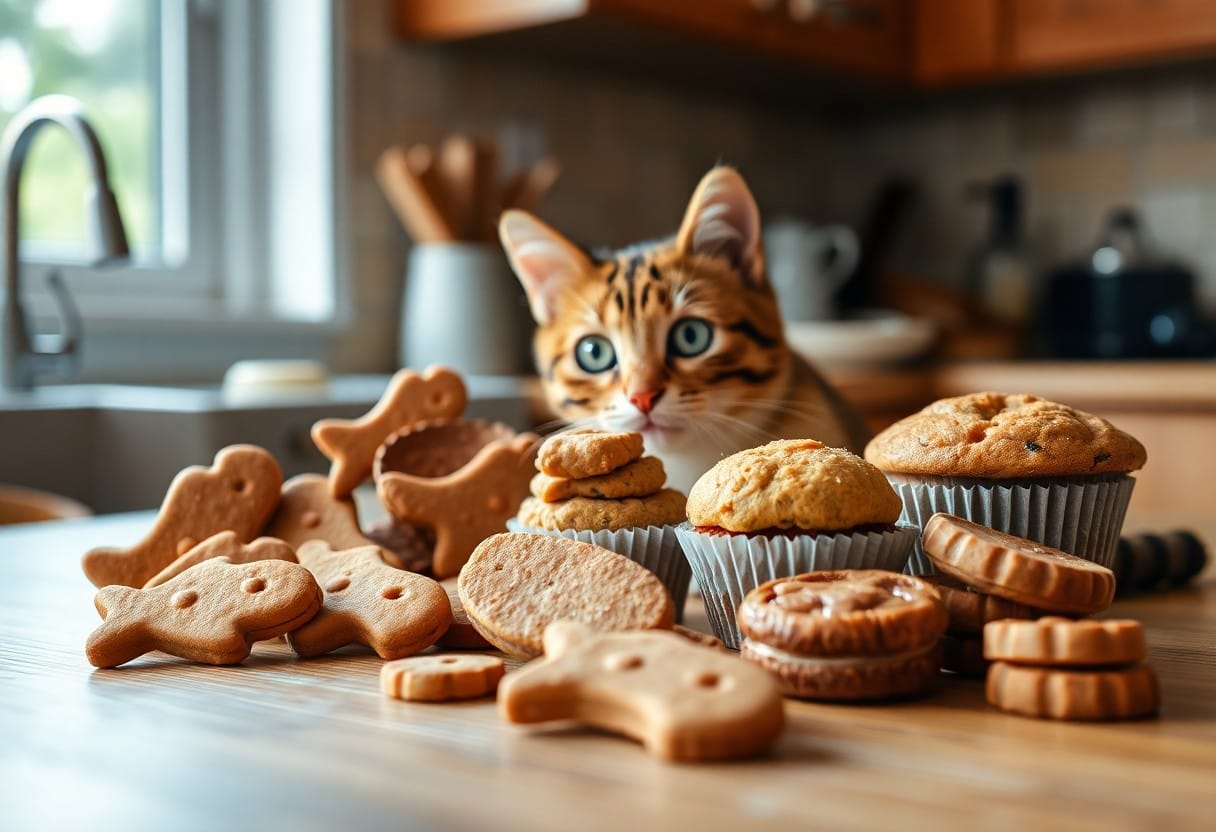It’s time to pamper your feline friend with some delicious homemade treats that are both easy to make and filled with healthy ingredients! In this blog post, you’ll discover a variety of fun recipes that not only cater to your cat’s taste buds but also ensure their well-being. By utilizing simple ingredients you likely already have in your kitchen, you can create wholesome snacks that will keep your kitty happy and engaged. Let’s examine these delightful recipes you can whip up today!
Key Takeaways:
- Creating homemade cat treats can strengthen the bond between you and your pet while ensuring they receive healthy ingredients.
- The recipes are designed to be simple and quick, making it easy for anyone to whip up delicious snacks for their cats.
- Experimenting with different flavors and ingredients allows for personalization, catering to your cat’s specific preferences and dietary needs.
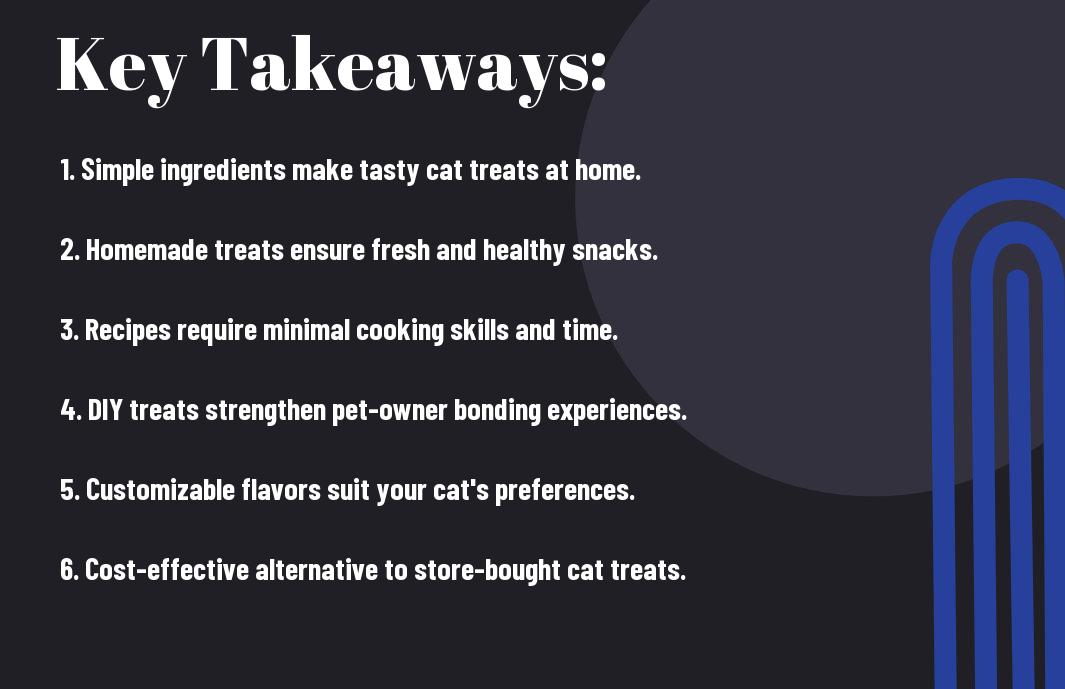
Benefits of Homemade Cat Treats
The benefits of homemade cat treats are abundant, as they allow you to provide your feline friend with nutritious snacks designed specifically for their needs. By choosing to make treats yourself, you can ensure that your cat’s diet is free from artificial preservatives and fillers, contributing to a healthier lifestyle. Moreover, crafting these treats can be a delightful bonding experience that enhances your relationship with your pet.
Healthier Ingredients
Above all, homemade cat treats empower you to select wholesome ingredients that benefit your cat’s health. You have the ability to customize recipes, opting for fresh meats, whole grains, and organic fruits or vegetables, while avoiding harmful additives found in many store-bought alternatives.
Cost-Effectiveness
About making your own cat treats, you’ll find it’s not only fulfilling but also cost-effective. Instead of spending a fortune on pre-packaged treats, using basic ingredients you likely already have at home can save you money while keeping your cat satisfied and nourished.
For instance, buying bulk ingredients like oats, chicken, or fish can significantly reduce costs compared to purchasing small bags of commercial treats. Moreover, by preparing these snacks at home, you control the quality and freshness of the ingredients, ensuring your feline will enjoy delicious and safe treats. This way, you’re not only maximizing your budget but also providing a more consistent supply of fun and healthy snacks for your beloved pet.
Essential Ingredients for DIY Cat Treats
If you want to create delightful and healthy treats for your cat, knowing the important ingredients is key. A combination of fresh proteins, fruits, and grains will provide the necessary nutrition while satisfying your cat’s taste buds. You can easily find these ingredients in your kitchen or at the local grocery store, making it simple to whip up delicious snacks for your feline friend.
Feline-Friendly Staples
The foundation of your DIY cat treats should include feline-friendly staples such as chicken, tuna, or salmon. These protein-rich ingredients are not only taste favorites for your cat but also contribute important amino acids to their diet. Adding elements like whole grain oats or brown rice can provide healthy fiber, and pureed pumpkin can offer additional nutrients and digestive benefits.
Optional Add-Ins
Ingredients like catnip or dried fish flakes can enhance the flavor and appeal of your homemade treats. You can experiment with various optional add-ins to keep your cat excited and engaged during treat time. Always watch for allergies or sensitivities when introducing new ingredients.
A variety of optional add-ins can elevate your cat treats to new taste levels. You might consider adding pureed veggies like carrots or spinach for extra vitamins, or a sprinkle of cheese for a tantalizing taste your pet will love. However, it’s important to avoid ingredients that are toxic to cats, such as onions or garlic, ensuring that every treat you make is safe and nutritious. The best part? Customizing recipes lets you cater specifically to your cat’s preferences!

Easy Recipes for Homemade Cat Treats
Not only are homemade cat treats fun to make, but they also allow you to control the ingredients your furry friend consumes. With just a few simple recipes, you can whip up delectable snacks that will have your cat purring with delight. Plus, you’ll save money compared to store-bought options while ensuring your pet enjoys treats made from wholesome ingredients.
Chicken and Pumpkin Bites
Any cat would love these delicious Chicken and Pumpkin Bites, which blend protein-rich chicken with the nutrition of pumpkin. To prepare, mix cooked chicken, pureed pumpkin, and a bit of oats, then shape the mixture into small bites. Bake them until firm, and you’ll have a tasty treat that’s perfect for any occasion.
Fish-Focused Feline Treats
Along with chicken, many cats adore fish! These Fish-Focused Feline Treats are not only mouth-watering but also rich in omega-3 fatty acids, beneficial for your cat’s coat and skin. The recipe is simple: combine canned tuna or salmon with a bit of flour and an egg, then bake until crunchy. Your cat will come running the moment they catch a whiff of these!
At home, you can easily create Fish-Focused Feline Treats that your kitty will love. Using ingredients like canned tuna or salmon, you can ensure that the treat is both tasty and nutritious. Just mix the fish with whole wheat flour and a beaten egg, shape into small fish-like forms, and bake until crispy. These treats not only satisfy your cat’s cravings but also provide important nutrients that contribute to their overall well-being. Make sure to introduce new treats gradually into your cat’s diet!
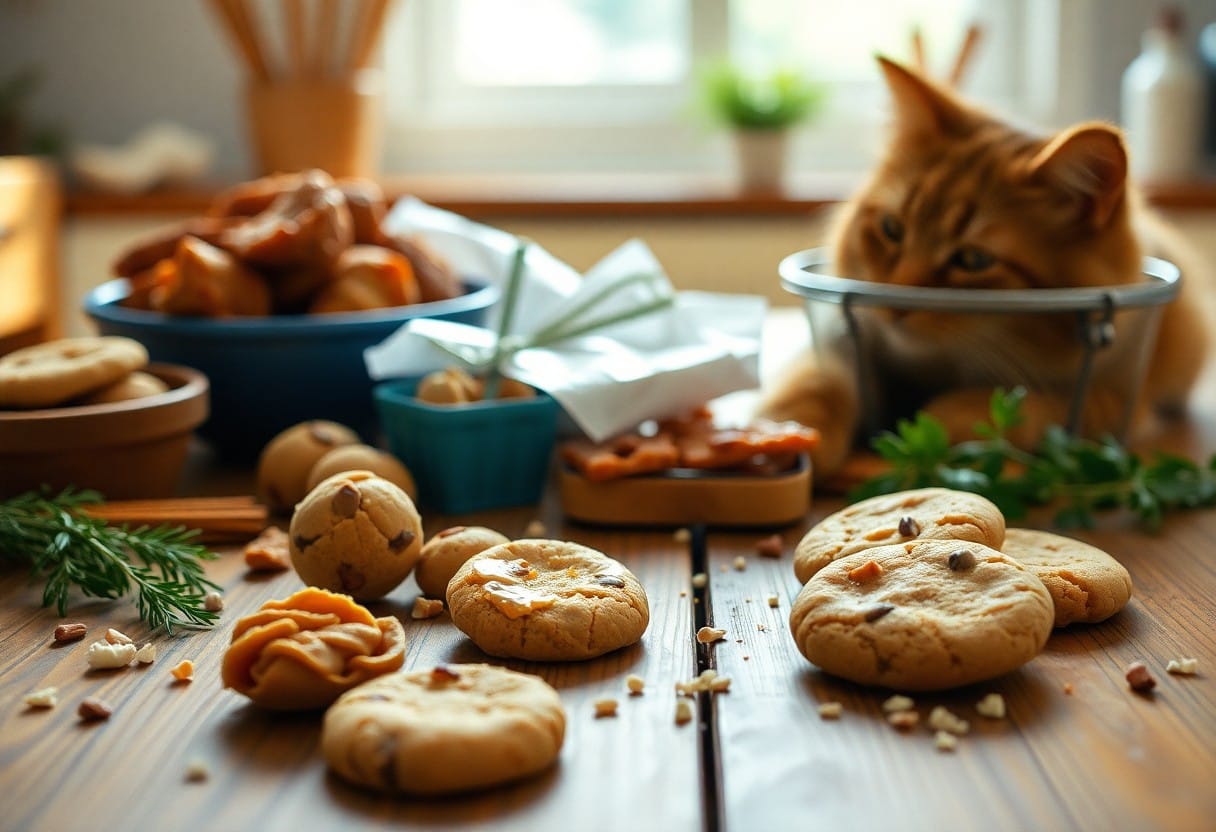
Creative Ways to Shape and Store Treats
Unlike store-bought treats, homemade options allow you to get creative with shapes and storage methods. You can turn ordinary biscuits into fun, bite-sized treats shaped like fish, hearts, or even your cat’s favorite toy. By using cookie cutters or silicon molds, you can make treat time even more exciting for your furry friend. Plus, customizing your treat shapes adds a personal touch that your cat will appreciate!
Fun Shapes and Molds
About using fun shapes and molds, your cat treats can transform from standard bites to delightful shapes that might even make you smile. Utilizing cookie cutters or silicone molds not only allows for creative presentation but also makes each treat feel special. You can experiment with various designs to match your cat’s personality and even create themed treats for holidays or special occasions.
Proper Storage Techniques
Above all, storing your homemade cat treats properly is necessary to maintain their freshness and safety. Keeping them in a cool, dry place helps prevent spoilage, while airtight containers will keep them fresh longer. Using glass or BPA-free plastic containers can also help avoid any potential chemical leaching into your treats.
Storage is vital for ensuring that your cat treats remain safe and tasty. Always place your treats in airtight containers to limit exposure to moisture, which can lead to mold. Label your containers with the date of preparation to ensure you use them within a suitable timeframe. If you decide to freeze some treats, make sure they’re well-wrapped to avoid freezer burn while preserving their flavor and texture for your feline friend!
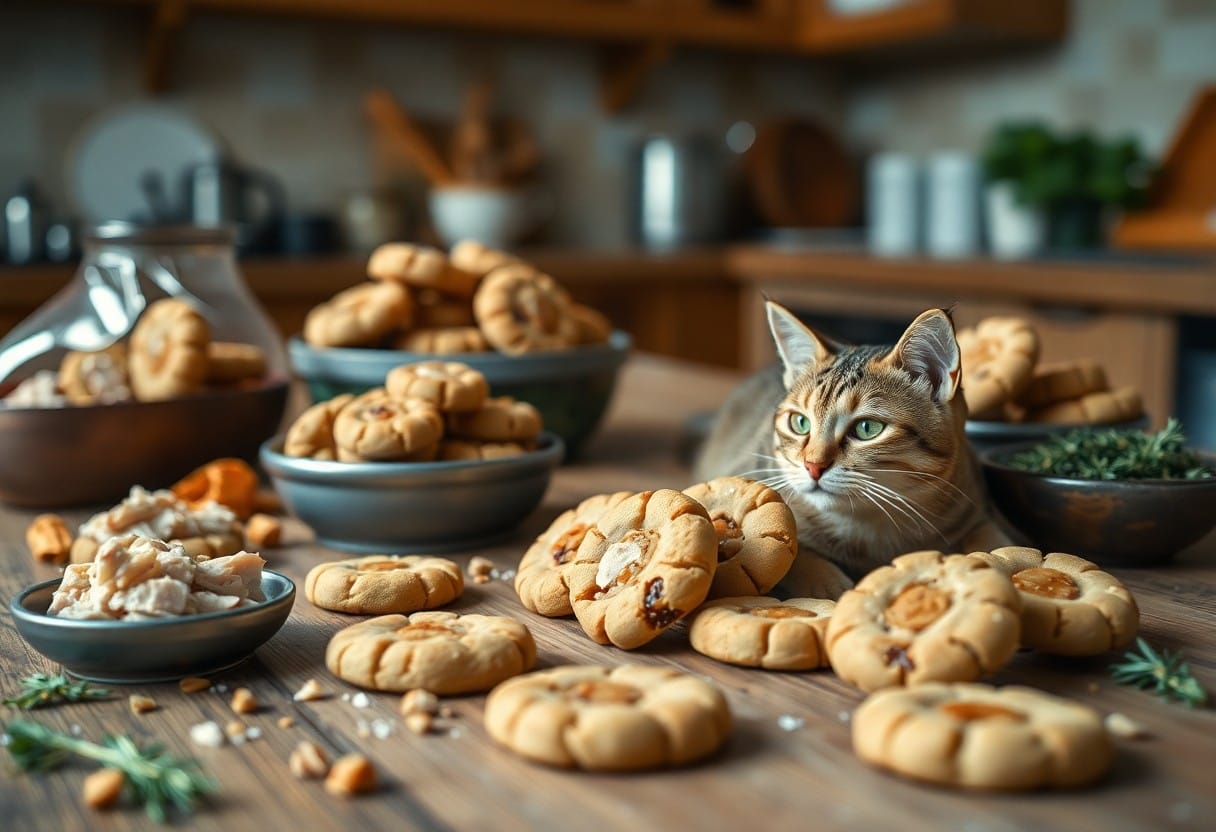
Tips for Introducing Treats to Your Cat
For a successful introduction of your homemade cat treats, take it slow and observe your feline friend’s responses. Here are some helpful tips:
- Start with small amounts.
- Combine treats with regular meals.
- Be patient—every cat is different.
- Encourage exploration without pressure.
- Always monitor for any allergic reactions.
Any new treat can be an exciting experience for your cat, so enjoy the process!
Gradual Introduction
Along the way, introduce the homemade treats gradually by incorporating them into their diet. Begin by mixing a tiny portion of the treats with their normal food, allowing your cat to adjust to the new flavors and textures. Observing their willingness to try the new addition will help you understand their favorites.
Monitoring Reactions
An important aspect of introducing new treats is closely monitoring your cat’s reactions. Ensure you watch for any signs of discomfort or unease after giving them the treats. Pay attention to changes in their behavior, appetite, and litter box habits.
Understanding your cat’s reactions is vital for their safety and well-being. Watch for positive signs of enjoyment, such as eagerly eating the treats and seeking more. Conversely, if you notice any negative responses like vomiting, diarrhea, or lethargy, discontinue giving that treat immediately. Always consult with your veterinarian if serious reactions occur, as your cat’s health is top priority.
Frequently Asked Questions about DIY Cat Treats
Now that you’re excited to whip up some delicious homemade treats for your feline friend, it’s natural to have questions. From ingredient safety to the best storage methods, understanding how to create the perfect snacks for your cat can be key to their enjoyment and health. Let’s address some common concerns and clarify everything you need to know for a successful DIY treat-making experience!
Shelf Life and Storage
On average, homemade cat treats can last up to a week when stored in an airtight container in the refrigerator. If you want to extend their shelf life, consider freezing them; just ensure they are well-wrapped to prevent freezer burn. Always check for any signs of spoilage before serving, as freshness is vital for both flavor and your cat’s health.
Nutritional Considerations
To keep your cat healthy and happy, it’s important to pay attention to the nutritional value of the ingredients you use in homemade treats.
A well-balanced treat should consist of ingredients that offer crucial nutrients, as well as avoid harmful additives like onions, garlic, and excess salt. Focus on high-quality protein sources such as fish or chicken, and include small amounts of wholesome grains like oats if your cat tolerates them. You should also consider your cat’s specific dietary needs, as some cats may require special low-calorie or grain-free options. Including a variety of nutrient-rich ingredients helps ensure your furry companion receives a treat that is both delicious and beneficial to their health.
To wrap up
To wrap up, creating homemade cat treats is a rewarding way to enhance your feline friend’s diet while showing your love and care. With simple ingredients and easy-to-follow recipes, you can whip up nutritious snacks that cater to your cat’s tastes. By making these treats yourself, you gain control over the quality and freshness of the ingredients, ensuring a healthier option for your furry companion. Try out a few recipes today, and enjoy watching your cat delight in your homemade creations, strengthening the bond you share.
FAQ
Q: What types of ingredients are typically used in homemade cat treat recipes?
A: Homemade cat treats can be made using a variety of wholesome and safe ingredients for cats. Common ingredients include cooked chicken or turkey, tuna, pumpkin, oat flour, and catnip. It’s important to ensure that any ingredients used are safe for your feline friend, avoiding harmful items such as onions, garlic, and chocolate. By using fresh, natural ingredients, you can create tasty and nutritious treats that your cat will love.
Q: How long do homemade cat treats last, and how should they be stored?
A: The shelf life of homemade cat treats can vary depending on the ingredients used. Generally, treats that contain meat or moisture should be stored in the refrigerator and consumed within a week. If baked, treats may last longer—up to two weeks—when kept in an airtight container at room temperature. To further extend their life, you can freeze the treats, allowing you to prepare larger batches that can be thawed and used as needed.
Q: Can I customize the recipes to accommodate my cat’s dietary restrictions?
A: Absolutely! Homemade cat treat recipes can be easily customized to cater to your cat’s specific dietary needs. If your cat has allergies or sensitivities, you can substitute ingredients as necessary. For example, if your cat cannot tolerate certain grains, you might use alternative flours like coconut or almond flour. Always consult with your veterinarian before introducing new ingredients to ensure they meet your cat’s dietary requirements.
